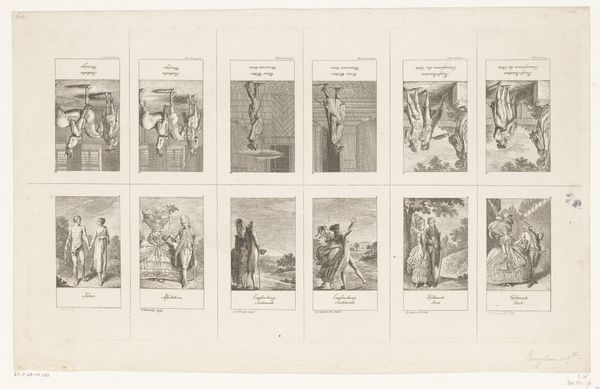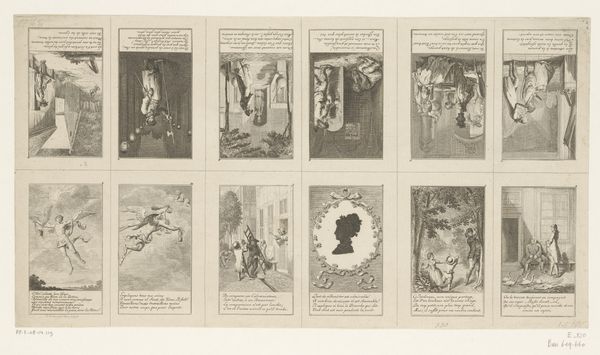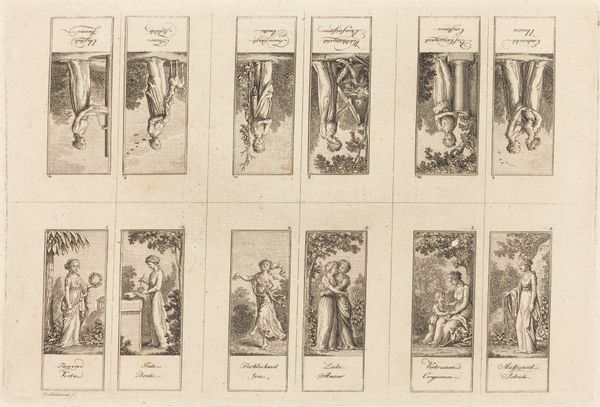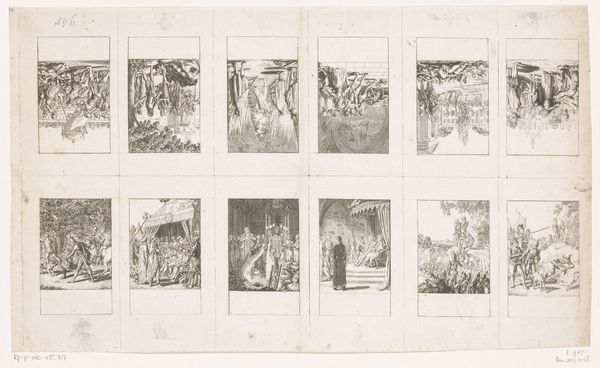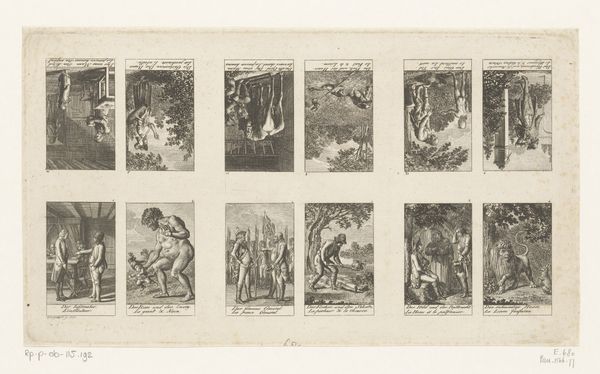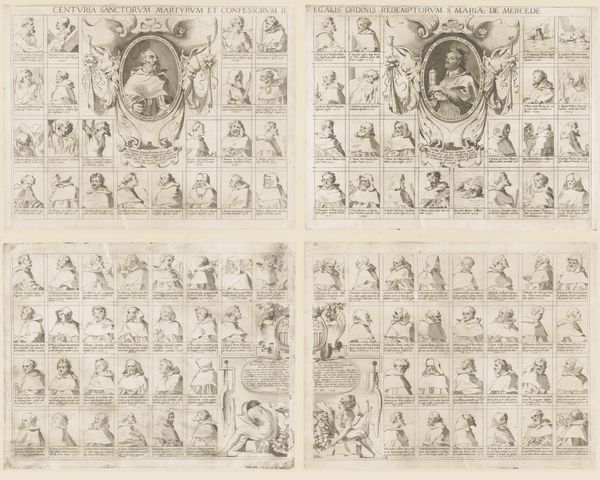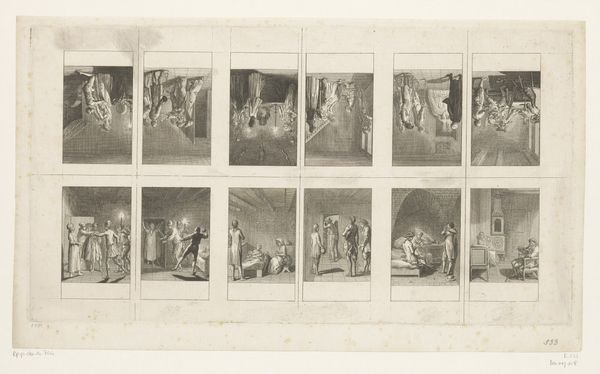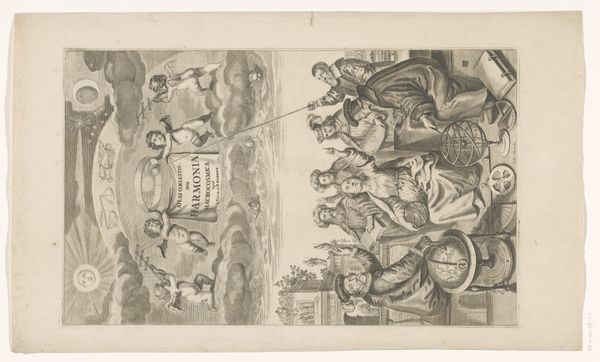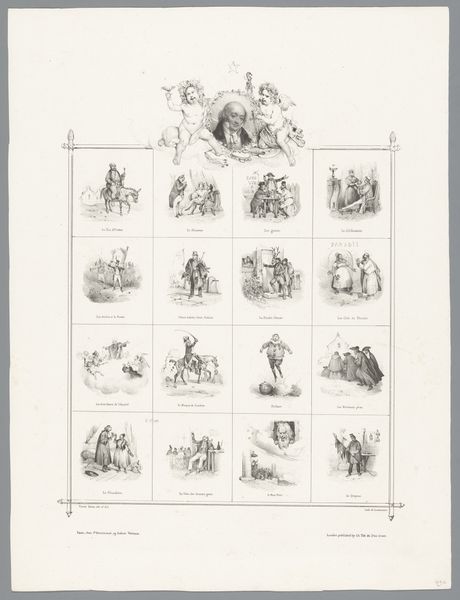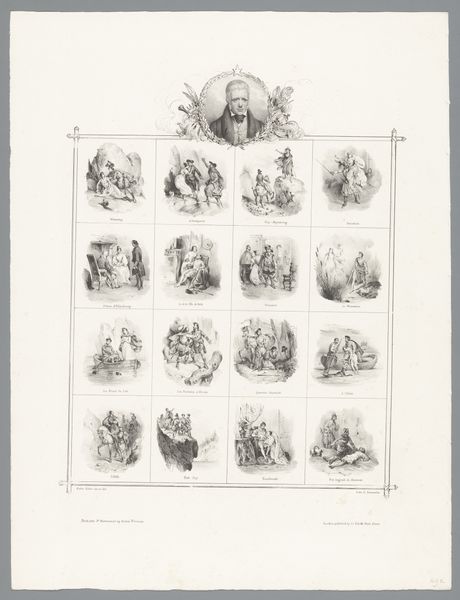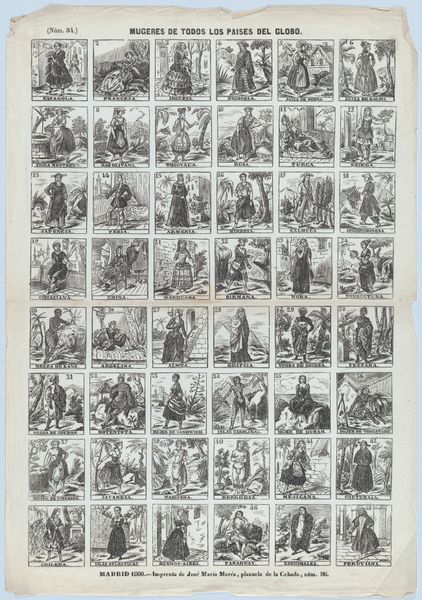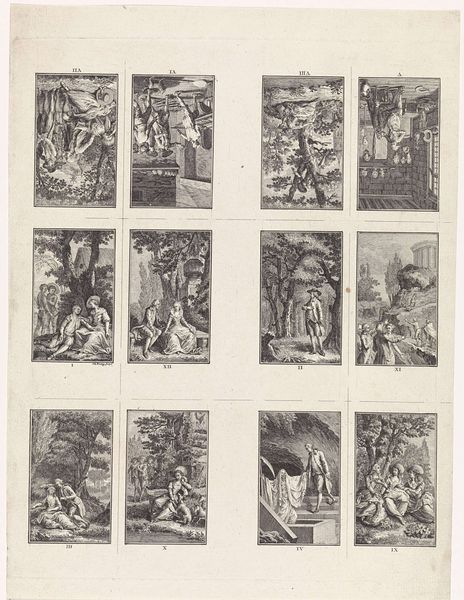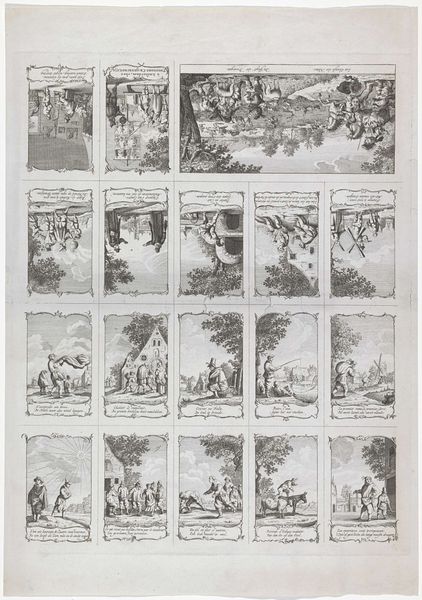
Dimensions: height 375 mm, width 234 mm
Copyright: Rijks Museum: Open Domain
Curator: Look at this fascinating print, "Twaalf scènes uit de Brandenburgse geschiedenis," created by Johann David Schleuen in 1769. It resides here at the Rijksmuseum. Editor: My initial impression is one of fragmented narratives. Twelve separate vignettes, each encased in a decorative oval frame. The fine lines create an overall sense of delicate precision. Curator: Exactly. Schleuen uses etching and engraving techniques, quite common for prints from this era, to articulate these historical moments. The composition offers a gridded arrangement. Notice how each scene is self-contained. Editor: The scenes themselves… they seem to pull from a common visual vocabulary, a shared symbolic language. Kings, battles, treaties… visual motifs of power and lineage are immediately apparent. I am also curious about the subtle repetition of architectural arches across a couple of them. Curator: An astute observation. Consider how line quality varies across the images. Schleuen employed distinct hatchings to differentiate foreground from background. He’s quite masterful in orchestrating tone through this calculated distribution of ink. Editor: Beyond the artistic technique, I am interested in unpacking the symbolism within each vignette. What do these images reveal about how Brandenburg’s history was perceived and memorialized at that time? We’re talking about curated memory here. Curator: Indeed. Observe the formalized settings. Each stage provides its symbolic figures clear zones of interaction, almost choreographing their display. Editor: The style feels very… theatrical. I can almost picture these scenes adapted for courtly entertainment. Those elaborate oval frames—a detail often dismissed—could serve as metaphors themselves, framing history as meticulously constructed narratives. Curator: A valid perspective, seeing how these graphic compositions convey their narrative with admirable efficiency. Perhaps, in its overall formal layout, one might interpret it as a family album of sorts for the Brandenburg lineage? Editor: A compelling idea. The arrangement almost echoes the pages of a royal chronicle, codifying the foundational stories for generations to come. It certainly prompts me to think more deeply about how visual representations cement power and shape cultural memory. Curator: Precisely. A powerful exploration through expertly etched lines.
Comments
No comments
Be the first to comment and join the conversation on the ultimate creative platform.
